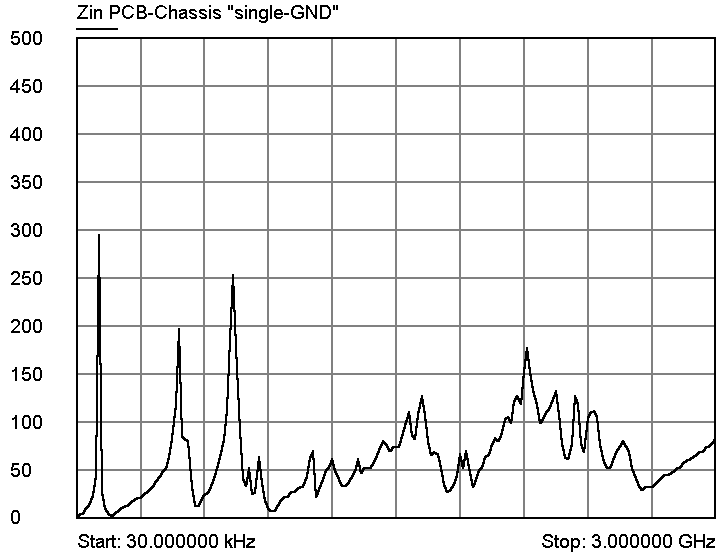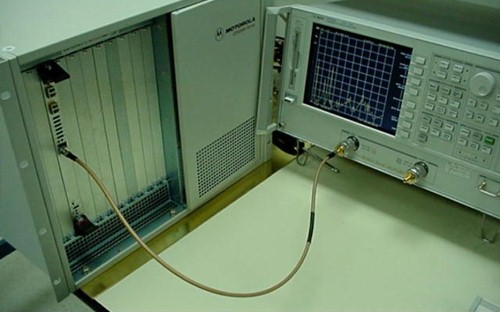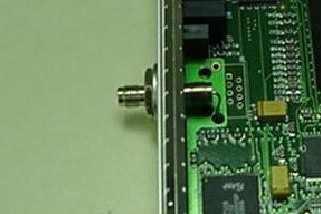Printed Wiring Board Coupling to a Nearby Metal Plane, Part 3: System Measurements

Figure 1. Impedance in Ohms vs. Frequency from 30 MHz to 3 GHz

Address: P. O. Box 1457, Los Gatos,
CA 95031
TEL:
800-323-3956/408-356-4186
FAX:
408-358-3799
Mobile: 408-858-4528
URL:
www.dsmith.org
Email: doug@dsmith.org

Figure 1. Impedance in Ohms vs. Frequency from 30 MHz to 3 GHz
Two other Technical Tidbit articles (April 2002 and May 2002) explored the strong coupling between a pwb and nearby metal plane. This month the subject is further explored with data provided by Neven Pischl (see acknowledgment below). This is the first Technical Tidbit based upon data not personally taken by myself, but it ties closely with the previous articles and provides additional useful insight into printed wiring board coupling to nearby conductive objects.
Figure 1 shows an impedance plot measured between the metal faceplate of a board in a shelf with respect to the board "ground" plane from 30 MHz to 3 GHz. The faceplate of the board was contacting adjacent faceplates to make a continuous plane across the front of the shelf, comprising an integral part of the complete enclosure. The board was a few cm from the side of the enclosure. Figure 2 shows the overall test setup. Figure 3 shows the details of the connector mounted to the board and faceplate. Note that the board did not have a metal plane backing. However, it is still strongly coupled to the enclosure walls and front metal faceplates. The board was "single point grounded" for DC and low frequencies by the power/ground connections in the backplane.

Figure 2. Test Setup for PWB to Chassis Impedance Measurement

Figure 3. Connector for Impedance Measurement Mounted On PWB Faceplate
With reference to Figure 1, the power/ground connection in the backplane likely provides the low initial impedance at 30 MHz. After a peak of about 300 Ohms at about 100 MHz there are two more sharp peaks and broad nulls. The nulls, occurring at about 160 MHz, 570 MHz, and 920 MHz have magnitudes of just tens of Ohms. At these low points of impedance, the front of the board is essentially connected to the faceplate even though no such metallic connection is made. The first three impedance peaks range from 200 to 300 Ohms despite the backplane ground connection.
There are a number of effects that result in the impedance plot of Figure 1 including: the backplane connection, standing waves on the PWB, cavity resonances in the enclosure, and of course distributed capacitive coupling between the board and the enclosure. If the backplane connection were not present, there still would be similar low and high points of the impedance as measured, although they would likely be shifted in frequency.
The conclusion can be drawn that parasitics, including coupling between a board and nearby metal, can have significant effects that overshadow attempts to single point ground a circuit board.
Acknowledgment:
Thanks to Neven Pischl, at Broadcom, who provided the data and pictures
for this article as well as a review of the text. If you want to contact
him via email, click here.
Related measurement articles on this website are: